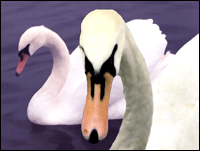'The Swan' by Saint-Saens
Created | Updated May 31, 2013

The beautiful cello solo known as 'The Swan' was composed by the French genius Camille Saint-Saëns (1835 - 1921) as part of his suite 'The Carnival of the Animals'. Other collections of animals wittily portrayed therein are lions, hens and roosters, wild asses, tortoises, elephants, kangaroos, the aquarium, mules, the cuckoo, the aviary, 'pianists' and fossils. After the swan has had its turn the various animal portraits are brought together in a vivacious finale.
This suite was written for the amusement of the Saint-Saëns family circle. Saint-Saëns apparently feared that publishing it might harm his reputation as a serious composer, and so 'The Carnival of the Animals' was released to the grateful public only after his death in 1921, according to his will.
He made an exception, however, for the most beautiful piece in the set, 'The Swan', which was first published by itself in 1886. The haunting cello melody, gliding gently above shifting harmonies in the gently rippling piano accompaniment, makes a lovely song without words, and the imagery is immediately appreciated by first-time audiences of all levels.
'The Swan' is one of relatively few show-pieces for cello and piano that fall within the range of the amateur, a factor which in performance has resulted in too many ugly ducklings. Although neither cello nor piano part is technically difficult, they have to be played perfectly. The cello part can easily sound out of tune at the higher reaches of the melody, while the piano part demands concentration throughout; the final arabesques1 for the piano are (and feel) uncomfortably exposed.
This graceful piece of music also exists in an arrangement for cello and orchestra, and there are versions for solo violin. A ballet adaptation created for the legendary Anna Pavlova in 1905 has, perhaps not surprisingly, become a classic in its own right, and is known as 'The Dying Swan'. However, the swan in Saint-Saëns' original piece seems to be very much alive. There even exists an arrangement for the trombone.

